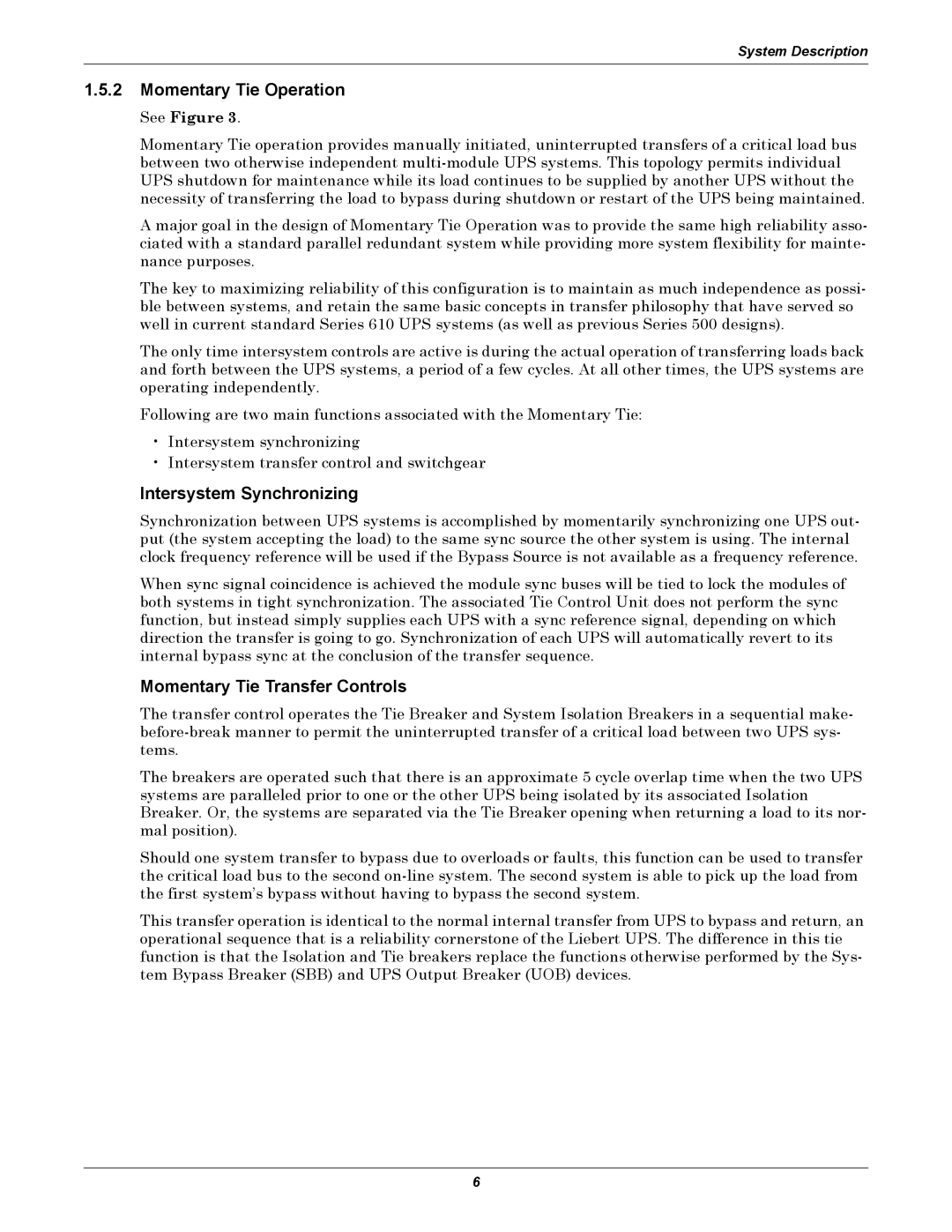
System Description
1.5.2Momentary Tie Operation
See Figure 3.
Momentary Tie operation provides manually initiated, uninterrupted transfers of a critical load bus between two otherwise independent
A major goal in the design of Momentary Tie Operation was to provide the same high reliability asso- ciated with a standard parallel redundant system while providing more system flexibility for mainte- nance purposes.
The key to maximizing reliability of this configuration is to maintain as much independence as possi- ble between systems, and retain the same basic concepts in transfer philosophy that have served so well in current standard Series 610 UPS systems (as well as previous Series 500 designs).
The only time intersystem controls are active is during the actual operation of transferring loads back and forth between the UPS systems, a period of a few cycles. At all other times, the UPS systems are operating independently.
Following are two main functions associated with the Momentary Tie:
•Intersystem synchronizing
•Intersystem transfer control and switchgear
Intersystem Synchronizing
Synchronization between UPS systems is accomplished by momentarily synchronizing one UPS out- put (the system accepting the load) to the same sync source the other system is using. The internal clock frequency reference will be used if the Bypass Source is not available as a frequency reference.
When sync signal coincidence is achieved the module sync buses will be tied to lock the modules of both systems in tight synchronization. The associated Tie Control Unit does not perform the sync function, but instead simply supplies each UPS with a sync reference signal, depending on which direction the transfer is going to go. Synchronization of each UPS will automatically revert to its internal bypass sync at the conclusion of the transfer sequence.
Momentary Tie Transfer Controls
The transfer control operates the Tie Breaker and System Isolation Breakers in a sequential make-
The breakers are operated such that there is an approximate 5 cycle overlap time when the two UPS systems are paralleled prior to one or the other UPS being isolated by its associated Isolation Breaker. Or, the systems are separated via the Tie Breaker opening when returning a load to its nor- mal position).
Should one system transfer to bypass due to overloads or faults, this function can be used to transfer the critical load bus to the second
This transfer operation is identical to the normal internal transfer from UPS to bypass and return, an operational sequence that is a reliability cornerstone of the Liebert UPS. The difference in this tie function is that the Isolation and Tie breakers replace the functions otherwise performed by the Sys- tem Bypass Breaker (SBB) and UPS Output Breaker (UOB) devices.
6
